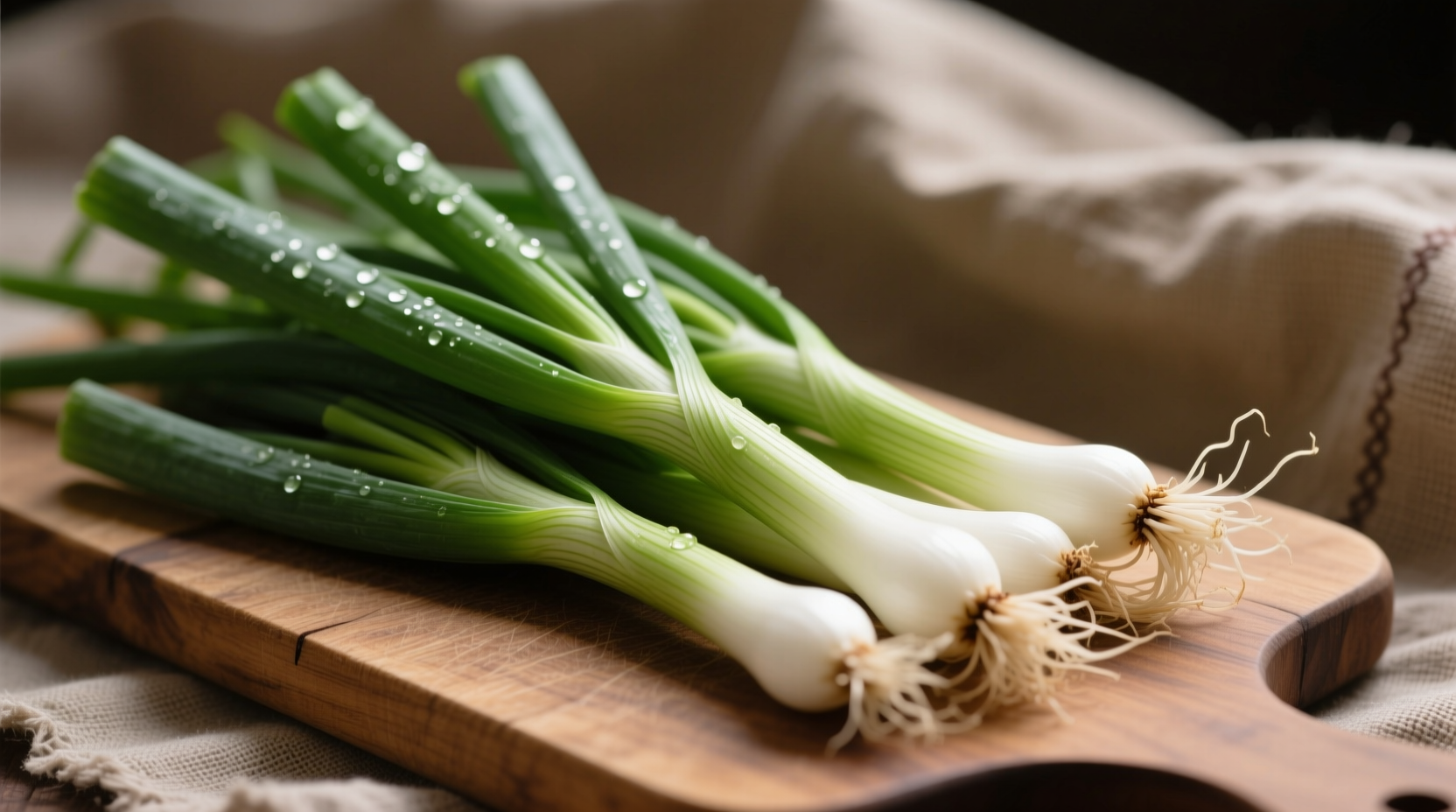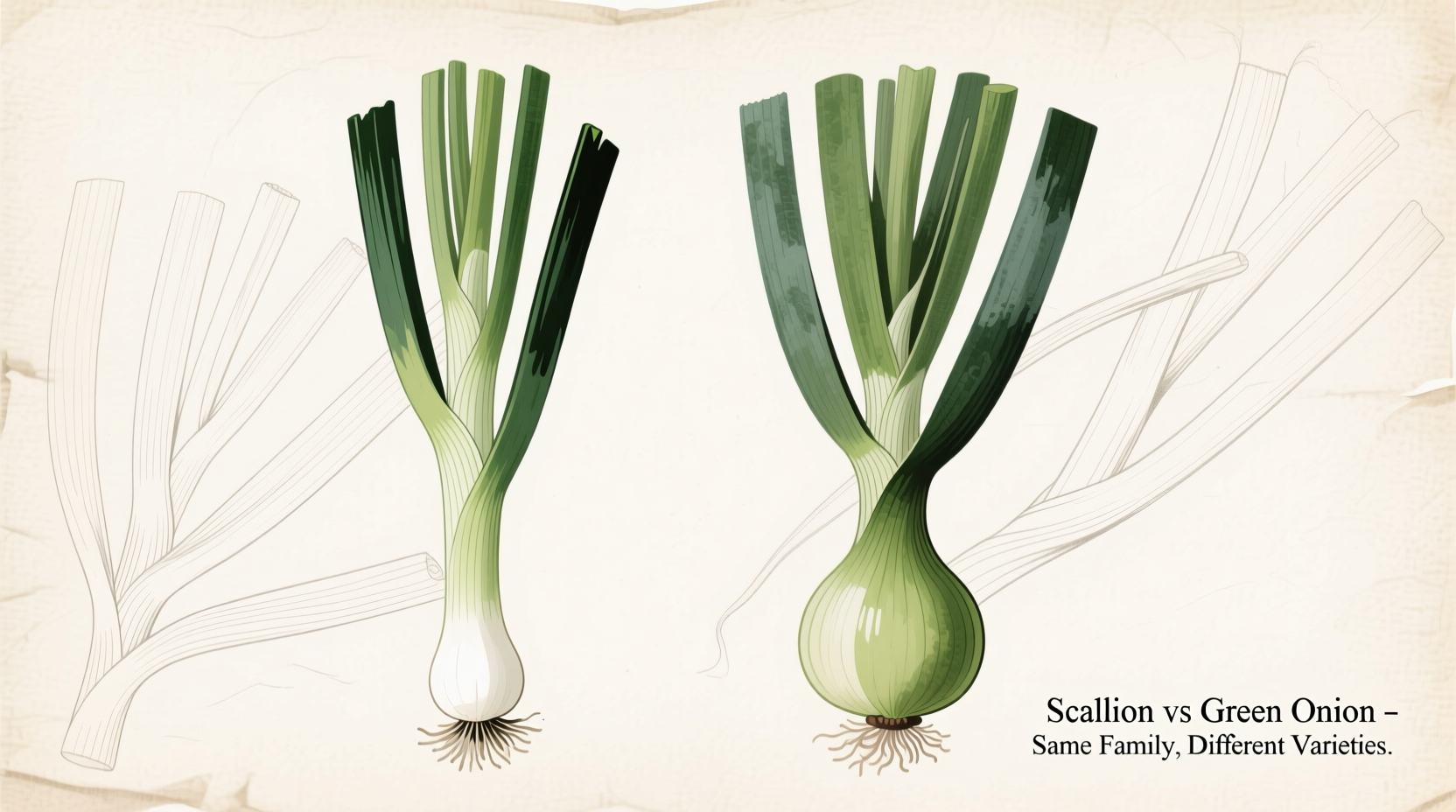Confused about whether scallions and green onions differ? You're not alone. This common kitchen conundrum trips up home cooks and professionals alike. Let's cut through the confusion with definitive answers you can trust.
Why the Confusion Exists
The terms "scallion" and "green onion" refer to the same plant species (Allium fistulosum), but regional language preferences and subtle harvesting practices have created unnecessary confusion. According to the USDA's FoodData Central, both terms describe immature onions harvested before bulb development.
| Terminology | Common Usage Regions | Botanical Reality |
|---|---|---|
| Scallion | Northeastern US, Canada, UK | Same plant as green onion |
| Green Onion | Southern US, Australia | Same plant as scallion |
| Spring Onion | UK, Europe | Sometimes refers to small bulb varieties |
Practical Differences in the Produce Section
While botanically identical, you might notice slight variations in how they're presented:
- True scallions/green onions: Harvested young with no developed bulb, featuring long green stalks and small white bases
- "Spring onions" in some markets: May have slightly larger bulbs (about 1 inch diameter) but still belong to the same species
- Welsh onions: Another name for the same variety, despite containing no Welsh origin
Cornell University's Vegetable Program confirms that Allium fistulosum doesn't form significant bulbs regardless of harvest time, distinguishing it from regular onions (Allium cepa) that develop large bulbs when mature.

When Substitutions Matter in Cooking
Understanding scallion terminology becomes crucial when following recipes:
- Asian cuisine recipes: Typically expect true scallions (no bulb) for garnishes and stir-fries
- Middle Eastern dishes: Often specify green onions for salads and dips
- Baking substitutions: Never replace with mature onions which have stronger flavor profiles
The American Heart Association notes in their healthy cooking guidelines that scallions provide milder onion flavor with significant vitamin K and C content, making them preferable for raw applications where stronger onions would overpower dishes.
Proper Selection and Storage Techniques
Maximize freshness with these professional chef tips:
- Selecting: Look for crisp green tops and firm white bases without yellowing
- Storing: Keep in a glass of water in the refrigerator (change water every 2 days)
- Freezing: Chop and freeze in oil for cooked dishes (not recommended for raw applications)
- Shelf life: 7-10 days when properly stored
Common Misconceptions Clarified
Let's address persistent myths about these versatile alliums:
- Myth: Green onions are immature regular onions
- Fact: They're a distinct species that never develops large bulbs
- Myth: The green part is too strong to eat
- Fact: The entire plant is edible with the green portion offering milder flavor
- Myth: They're the same as chives
- Fact: Chives are a different allium species with hollow, grass-like stalks
Professional Cooking Applications
Master these techniques for optimal flavor extraction:
- Raw applications: Slice thinly on diagonal for salads and garnishes
- Cooked dishes: Add white parts first (they need more cooking time)
- Infused oils: Steep in warm oil for subtle onion flavor
- Grilling: Whole stalks work beautifully with medium heat
When substituting in recipes requiring mild onion flavor, use a 1:1 ratio of scallions to green onions without adjustment. The James Beard Foundation's culinary research confirms identical flavor profiles between properly harvested specimens of both terms.
Frequently Asked Questions
Here are answers to the most common questions about scallions and green onions:











 浙公网安备
33010002000092号
浙公网安备
33010002000092号 浙B2-20120091-4
浙B2-20120091-4